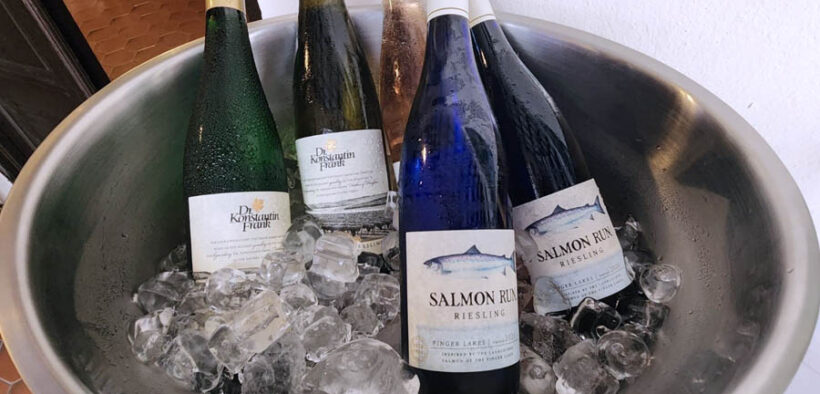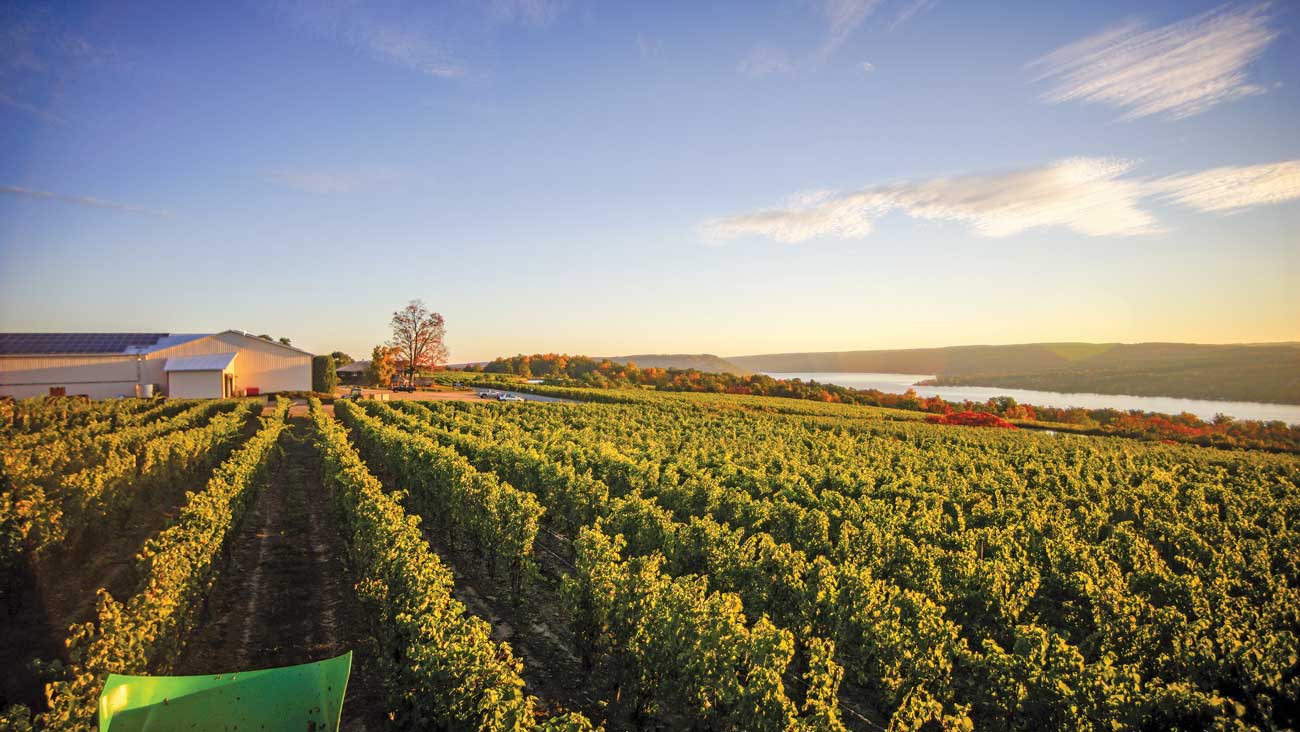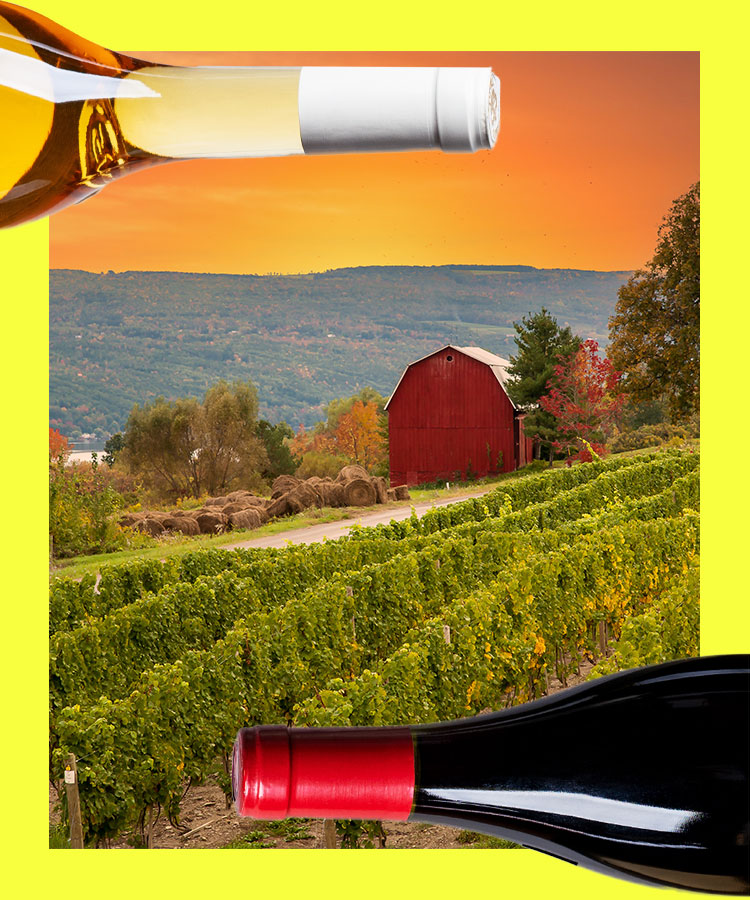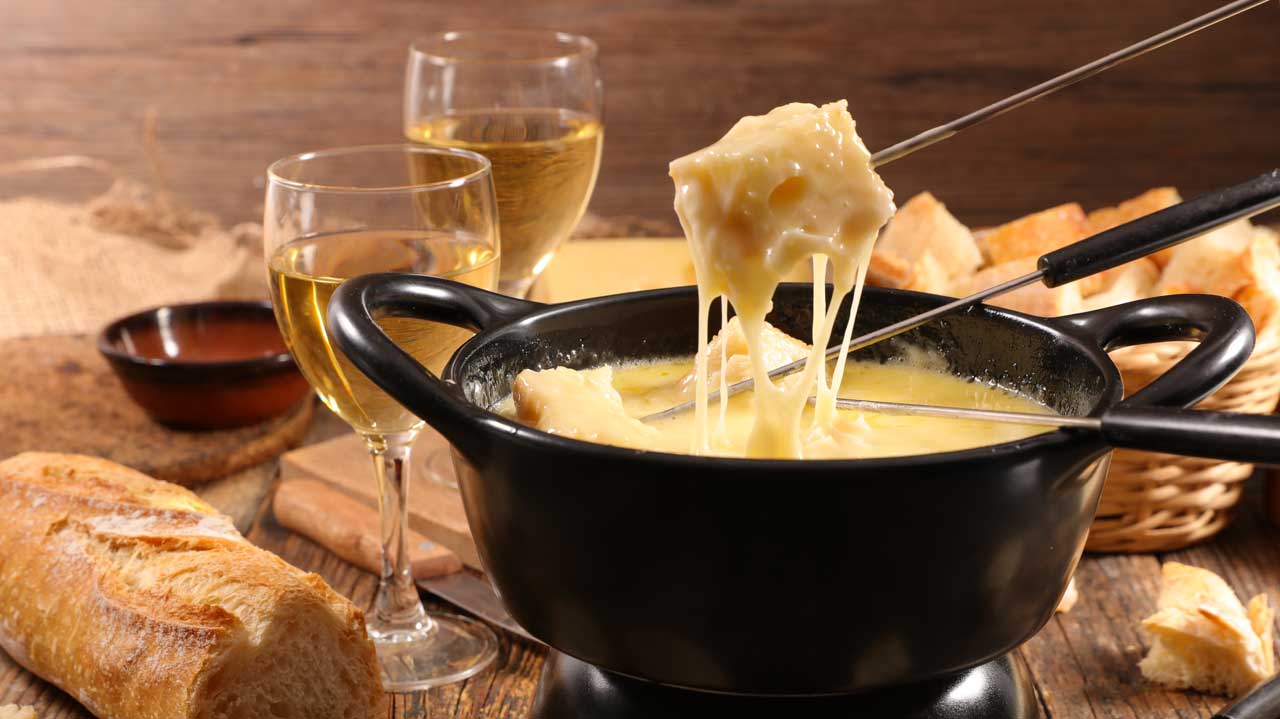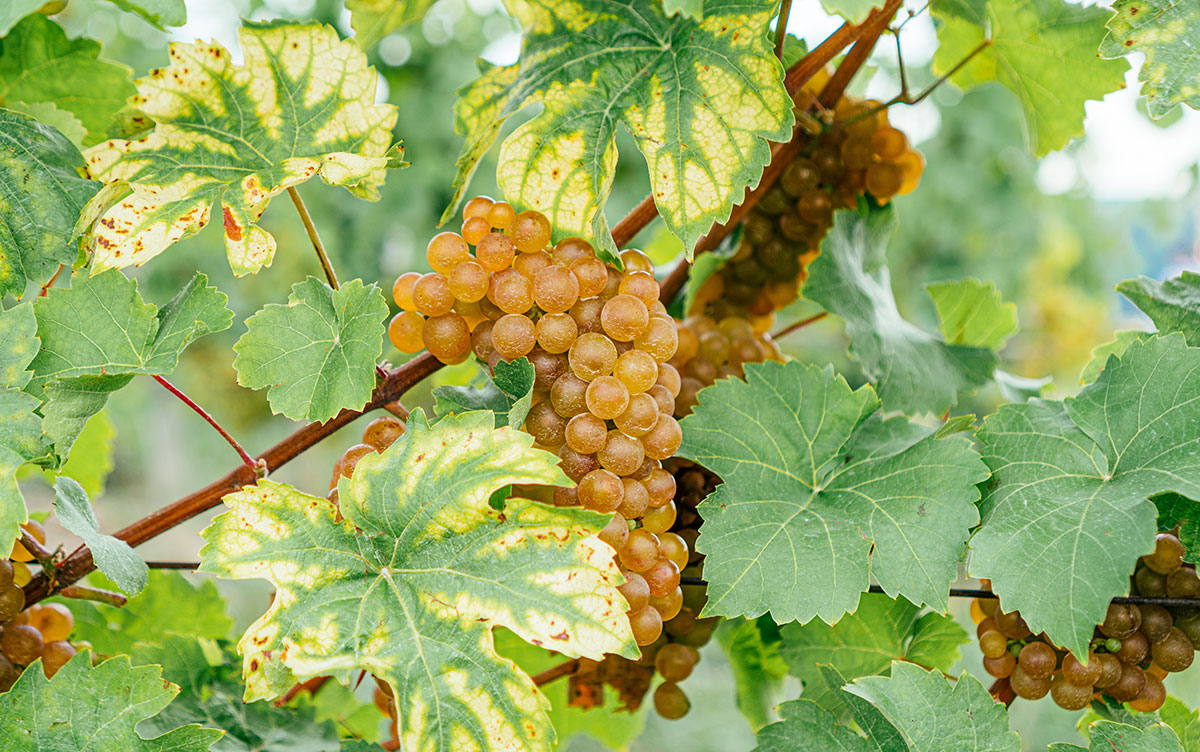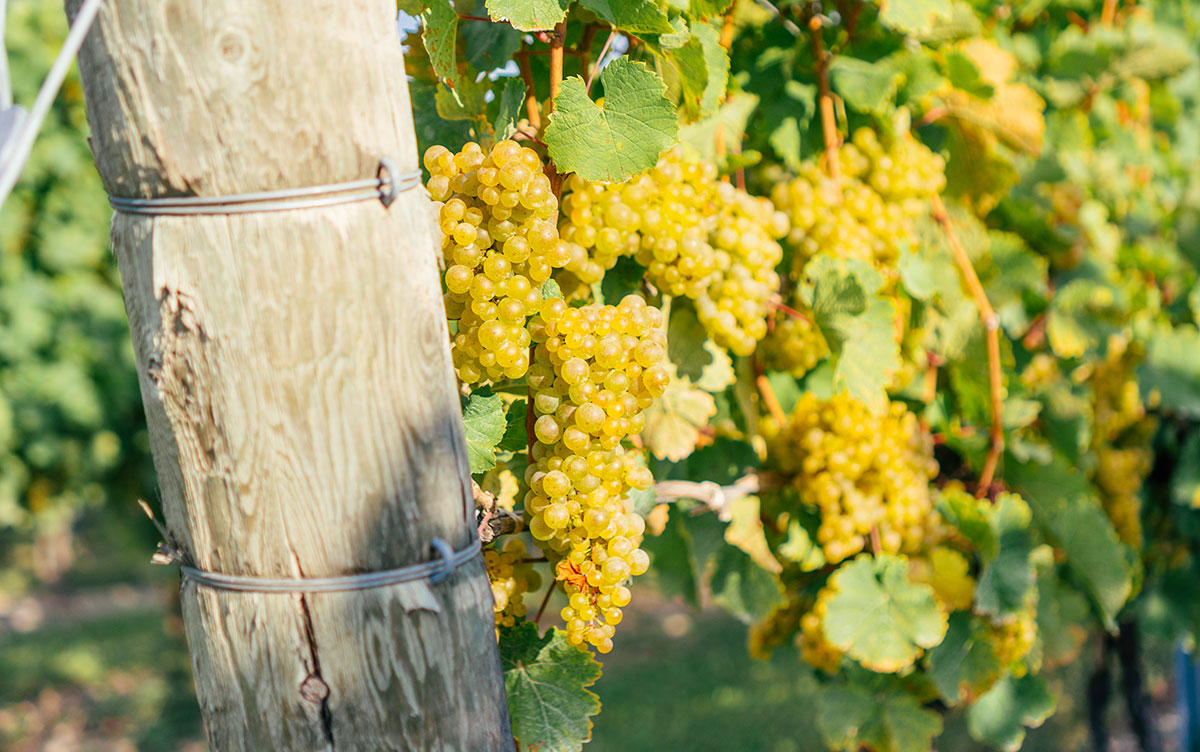Meaghan Frank on continuing the legacy at Dr Konstantin Frank wines
We continue our series of profiles of key New York State wine producers with a behind the scenes tour of Dr Konstantin Frank Winery by Meaghan Frank, the fourth generation of the Frank family that first came to the United States from Ukraine in 1951. Over the years the family has been at the centre of the ‘Vinifera Revolution’ that has taken place in the state as producers trialled and tested which grape varieties were best suited to the harsh growing conditions of the Finger Lakes.
Can you tell us some of the background to the winery and how it has evolved over the years?
Dr. Konstantin Frank Winery is a fourth generation family run business in the Finger Lakes region of New York. We celebrated our first vintage in 1962. Konstantin, a WWII refugee born in Ukraine, devoted his life to the science of grape growing and winemaking. He arrived in New York at the age of 52, not speaking a word of English with his three children and his wife, and was forced to start over.
He was shocked to hear that the Finger Lakes was not producing vinifera varieties and set out to prove the experts wrong. He was told that it was too cold to successfully grow vinifera in the Finger Lakes, but he knew that couldn’t be true because it was thriving in colder climates such as in Odessa. He theorised that it was not the cold climate but the presence of phylloxera, a pest native to North America that was the obstacle.
Konstantin took his viticultural knowledge that he had acquired in Ukraine and applied it to his vineyards, grafting phylloxera – resistance rootstocks with the vinifera varieties which is a completely natural method. He ignited the “Vinifera Revolution” a movement that forever changed the course of wine in the Eastern United States. The winery quickly earned a reputation for spectacular Rieslings and its original planting of vines formed the backbone of New York’s world-class wines.
My grandfather Willy, who was Dr. Frank’s son, took over the winery in the early 1980’s. He was determined to build on his father’s success and opened a traditional method sparkling winery on the property with the first vintage in 1985 working with Chardonnay, Pinot Noir, Pinot Meunier and Riesling. We continue to produce seven traditional method sparkling wines 35 years later.
My father, and Willy’s son, Fred Frank, became president of the winery in 1993. One of the first things he developed in his new role was the Salmon Run label. He knew that the winery needed an entry level, everyday affordable wine that would bring more consumers to enjoy Finger Lakes wines.
Under my father’s leadership the winery’s production and number of honours received has increased greatly. Wines from our winery are now available in over 37 states, making them among the most visible and well-known produced in New York State. The winery draws 80,000 visitors each year, providing a considerable boost for the local economy.
When did you join the family business?
I joined the business in 2013 after receiving my graduate degrees at University of Adelaide for Wine Business and Cornell University for Enology. I have really enjoyed working with and learning from my dad and our team. We have revamped the experiences offered at the winery, expanding to a more in depth food and wine experience in our 1886 stone Chateau building which is also home to our sparkling cellar. Additionally, we have begun producing our super-premium line of wines called our “Helm” series named after the women in my family who have helped build the business. I am proud of what we have done so far and feel very lucky to be part of continuing Konstantin’s legacy.
What grapes do you grow and why?
We specialise in the Northern European wine grapes, mostly aromatic white varieties with some red grapes. We produce only vinifera varieties and work with 17 different varietals. The most important one being Riesling which makes up more than half of our production. We also produce Chardonnay, Pinot Gris, Gruner Veltliner, Gewurztraminer, Rkatsiteli, Pinot Noir, Blaufrankish, Cabernet Franc and Saperavi to name a few.
Rkatsiteli and Saperavi are direct connections to Konstantin’s past in Ukraine where he planted these varieties on the estate that he managed. Konstantin planted Riesling because he felt the cool climate and rocky, acidic soils would be perfect for this grape – he was right!
What makes your particular region suitable for those grapes and what sort of styles of wine do they make/ do you like to make?
The Finger Lakes has a large and diverse array of soil types due to the receding of the glaciers during the last ice age which carved out deep lakes but also left behind many interesting soils. Riesling is incredibly transparent about communicating where it is grown, making this diversity of soil an asset to our region. The steep slopes and moderating effect from the deep lakes allows us these cool climate aromatic varieties to thrive. We want our wines to reflect the shale-based soils and cool climate so we choose to plant varieties that are well suited to those variables.
What is your approach to winemaking and has that changed at all in recent years?
Our approach is mixing the Old World techniques learned from generations of producing wine here in the Finger Lakes with the modern technology that is available to us now. We believe the wine is really made in the vineyard, therefore farming the 140 acres that we have on our two estates is the most important aspect to making our wine.
What would you say are the big points of difference – the USPs of New York wine that buyers should know?
Our cool climate is an asset not a liability with our high acid, aromatic wines that show a sense of place. Nowhere else in America will you find a better place to plant Riesling and other cool climate grapes like the Finger Lakes. Additionally, we have some of the oldest vines in America due to Konstantin’s foresight to plant on phylloxera resistant plant material. On our Keuka estate, we have the second oldest planting of Pinot Noir in America which was planted in 1958.
What are the main markets for your wine, both domestic and export?
We are distributed in 37 states with states in the Northeastern US making up our largest market but also do well in California and Florida. Japan, UK, Aruba, Dominican Republic, Bermuda are our largest export markets.
What percentage of your production goes to export – is that growing?
Around 3% of our total production is exported and it is growing slowly. We have put more support in place in Japan and I recently visited the market in February which was a wonderful visit. We are looking to expand into Sweden and Taiwan in the coming year.
What are the types of wine in your portfolio that work best in export and why?
Our Rieslings sell best in our largest export market of Japan. We are a pioneer producer in the Finger Lakes as we were the first to plant vinifera and Riesling has become synonymous with the Finger lakes.
What do you think of the UK market and why do you want to sell your wines there?
The UK market is one if not the most competitive wine market in the world. There is a rich and incredibly long history of consumers in the UK consuming wine and having access to the best European producers. The domestic wine scene seems to be growing at a rapid and impressive pace particularly with sparkling wines. I did a market visit to the UK in 2017 to visit our importer and distributor, Matthew Clark. and visited some sparkling producers in Kent.
I was extremely impressed with the baseline knowledge of consumers in the UK and of the quality of its emerging wine region. I feel that the wines that are produced in the Finger Lakes align well with the consumer preferences in the premium sector of the market where there is a high demand for cool- climate, aromatic, lower alcohol wines for a reasonable price.
Through Matthew Clark and are focused on building distribution in the on-trade.During my last visit, I was amazed at the interest, particularly through the sommelier community, with Riesling. Our wines are priced between £16-£20 pounds. The pricing allows for many opportunities by the glass.
How is the Covid-19 outbreak affecting the winery and your business?
We are having to adjust as we needed to close to the public. However, the past five years we have been developing our e-commerce business quite aggressively and this has really helped us during this time of only shipping. We are continuing operations in the vineyard and cellar while ensuring we are following the proper safety guidelines. The grapes do not know there is a pandemic going on, so they will not wait for us. Luckily, people do not stop drinking wine during a pandemic and we are so thankful for that. If anything, the Finger Lakes is well positioned because we are producing wines that are excellent value for money and that is what consumers seem to be interested in right now with an economic recession likely on the horizon.
What steps have you put in place?
We have created a plan so that our staff and guests feel comfortable [the winery re-opened for guests on June 13]. We have been trying to keep morale up by initiating a team step challenge, outdoor staff concerts and catered lunches. We have really switched gears to doing many virtual tastings and events. I recently did a cross-continental zoom tasting with my friend from Elena Walch in Alto Adige where we partnered with a local retailer and compared our Pinot Grigio/Pinot Gris and Gewurztraminers. We also have been doing “staff stories” every few days and sending it to our online mailing list where the staff members picks their favourite at home dish, at home activity and wine (the wine is discounted with a purchase for those few days). It has been a great way to engage with our customers from afar.
